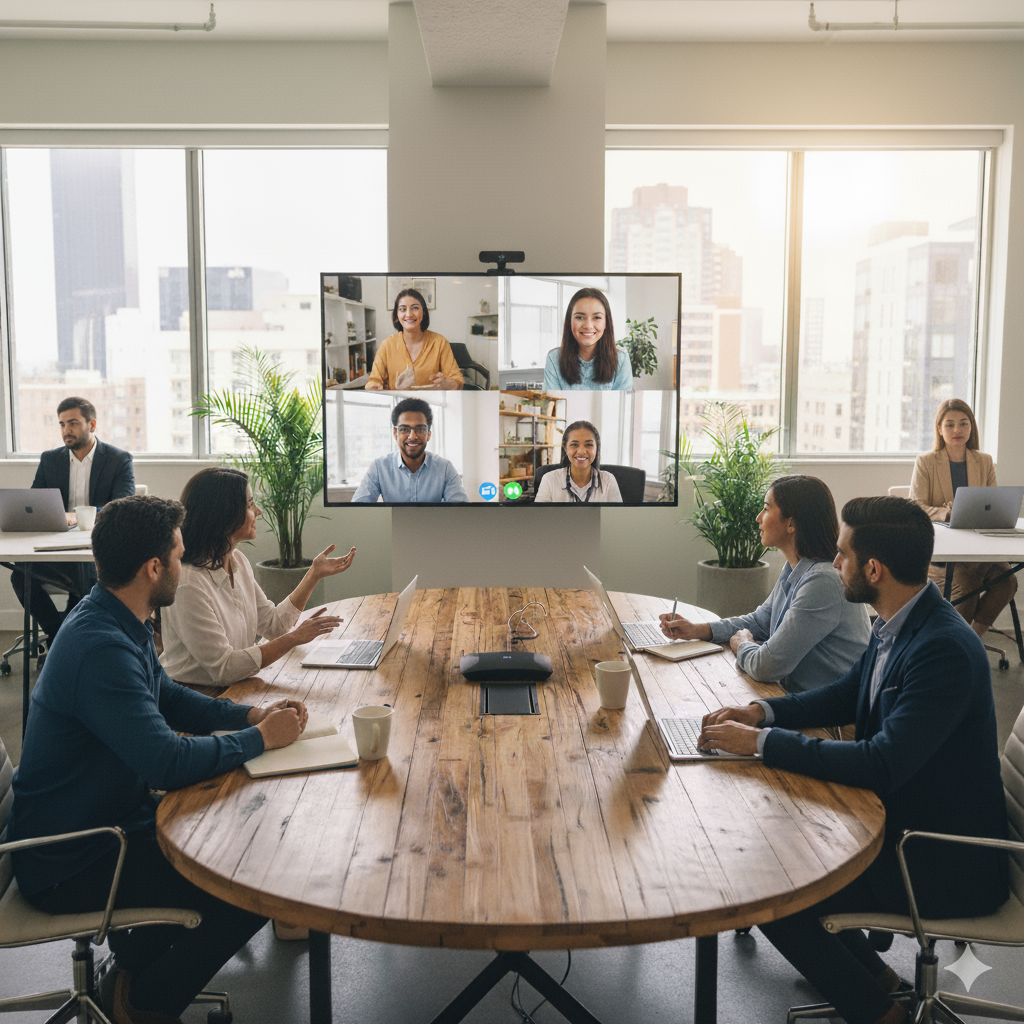In today’s dynamic business landscape, teamwork is no longer a luxury; it’s a necessity. The success of any organization hinges on the ability of its employees to collaborate effectively, share ideas openly, and work together towards shared goals. But simply bringing a group of talented individuals together doesn’t guarantee smooth sailing. Effective communication is the lifeblood of successful teams, acting as the bridge that connects individual strengths and propels collective achievement.
This blog post, brought to you by Korelate Learnings, a leading provider of team-building experiences, dives deep into the importance of communication in team-building. We’ll explore essential communication strategies, explore common challenges, and provide tips for fostering a culture of open and honest communication within your team. By implementing these strategies, you can unlock the true potential of your team and build a collaborative powerhouse that drives results.
Why Communication Matters in Team Building
Effective communication goes beyond simply exchanging information. It’s about creating a shared understanding, fostering trust, and building a foundation for successful collaboration. Here’s why communication is such a critical ingredient in team building:
-
Clarity and Alignment:
Clear communication ensures everyone on the team understands the project goals, individual roles, and expectations. This minimizes confusion, duplication of effort, and misaligned priorities.
-
Problem-Solving and Decision-Making:
Effective communication allows teams to share ideas, brainstorm solutions, and make informed decisions collaboratively. Open communication fosters diverse perspectives and leads to more comprehensive solutions.
-
Building Trust and Psychological Safety:
When team members feel comfortable expressing themselves openly and honestly, trust is built. This psychological safety allows for constructive criticism, open discussions, and a willingness to take risks.
-
Conflict Resolution and Negotiation:
Effective communication skills are essential for navigating disagreements and conflicts constructively. Team members can express their concerns, listen to different perspectives, and find solutions that benefit everyone.
-
Increased Engagement and Motivation:
When team members feel heard, valued, and part of the conversation, they’re more likely to be engaged and motivated to contribute their best efforts.
Investing in effective communication strategies is an investment in the success of your team. Now, let’s explore some specific communication strategies you can incorporate into your team-building efforts.
Communication Strategies for Effective Team Building
Building a team with strong communication skills takes dedication and consistent effort. Here are some key strategies to consider:
-
Active Listening:
This goes beyond simply hearing the words being spoken. Active listening involves paying close attention, asking clarifying questions, and demonstrating genuine interest in what others have to say.
- Body language: Maintain eye contact, use open body language, and avoid distractions to show you’re fully engaged in the conversation.
- Verbal cues: Use phrases like “I understand,” “Can you elaborate on that point?” or “That’s an interesting perspective” to show you’re following along.
- Summarise and paraphrase: Briefly summarise what you’ve heard to ensure understanding and prevent misunderstandings.
-
Clear and Concise Communication:
Express your ideas and messages in a clear, concise, and easy-to-understand manner.
- Organize your thoughts: Before speaking, take a moment to organize your thoughts and structure your message for clarity.
- Use simple language. Avoid jargon and technical terms that some team members may not understand.
- Focus on the key message: Avoid rambling and focus on delivering the core message you want your team to understand.
-
Empathy and Respect:
Approach all communication with empathy and respect for your colleagues’ perspectives and ideas.
- Consider the audience: Tailor your communication style to your audience, considering their background and communication preferences.
- Be mindful of nonverbal cues. Be aware of your own nonverbal cues and how they might be interpreted by others.
- Acknowledge and validate feelings: Acknowledge and validate your colleagues’ feelings, even if you disagree with their perspectives.
-
Encourage Open Communication:
Create an environment where team members feel comfortable expressing themselves openly and honestly.
- Lead by example: As a team leader, demonstrate open communication by actively listening, encouraging diverse opinions, and being open to feedback.
- Focus on solutions: When addressing problems, focus on finding solutions together rather than assigning blame.
- Celebrate open communication: recognize and appreciate team members who actively participate in discussions and share their ideas.
-
Effective Meetings:
Meetings are a valuable tool for communication, but poorly run meetings can be a time drain. Here are some tips for holding effective meetings:
- Clear agenda and purpose: Have a clear agenda and purpose for every meeting and communicate them to participants in advance.
- Manage time effectively: Stick to the allocated time and avoid going off. Building a team with strong communication skills takes dedication and consistent effort. Here are some key strategies to consider:
-
Active Listening:
This goes beyond simply hearing the words being spoken. Active listening involves paying close attention, asking clarifying questions, and demonstrating genuine interest in what others have to say.
- Body language: Maintain eye contact, use open body language, and avoid distractions to show you’re fully engaged in the conversation.
- Verbal cues: Use phrases like “I understand,” “Can you elaborate on that point?” or “That’s an interesting perspective” to show you’re following along.
- Summarise and paraphrase: Briefly summarise what you’ve heard to ensure understanding and prevent misunderstandings.
-
Clear and Concise Communication:
Express your ideas and messages in a clear, concise, and easy-to-understand manner.
- Organize your thoughts: Before speaking, take a moment to organize your thoughts and structure your message for clarity.
- Use simple language. Avoid jargon and technical terms that some team members may not understand.
- Focus on the key message: Avoid rambling and focus on delivering the core message you want your team to understand.
-
Empathy and Respect:
Approach all communication with empathy and respect for your colleagues’ perspectives and ideas.
- Consider the audience: Tailor your communication style to your audience, considering their background and communication preferences.
- Be mindful of nonverbal cues. Be aware of your own nonverbal cues and how they might be interpreted by others.
- Acknowledge and validate feelings: Acknowledge and validate your colleagues’ feelings, even if you disagree with their perspectives.
-
Encourage Open Communication:
Create an environment where team members feel comfortable expressing themselves openly and honestly.
- Lead by example: As a team leader, demonstrate open communication by actively listening, encouraging diverse opinions, and being open to feedback.
- Focus on solutions: When addressing problems, focus on finding solutions together rather than assigning blame.
- Celebrate open communication: recognize and appreciate team members who actively participate in discussions and share their ideas.
-
Effective Meetings:
Meetings are a valuable tool for communication, but poorly run meetings can be a time drain. Here are some tips for holding effective meetings:
- Clear agenda and purpose: Have a clear agenda and purpose for every meeting and communicate them to participants in advance.
- Manage time effectively: Stick to the allocated time and avoid going off on tangents.
- Facilitate discussion: Ensure everyone has a chance to contribute and avoid letting one or two individuals dominate the conversation.
- Action items and follow-up: Assign clear action items with deadlines and follow up after the meeting to ensure progress is made.
-
Utilize the Right Communication Tools:
Choose the communication tools that best suit the purpose and context of your communication.
- Face-to-face meetings: For complex discussions, brainstorming sessions, or building rapport, face-to-face meetings are irreplaceable.
- Video conferencing is a good option for remote teams or geographically dispersed colleagues, allowing for real-time interaction.
- Email is effective for conveying information, sharing documents, and keeping a record of communication.
- Project management tools: Collaboration platforms can be helpful for assigning tasks, sharing files, and tracking progress.
- Instant messaging: useful for quick updates, short discussions, and real-time communication during projects.
By implementing these communication strategies, you can foster a collaborative team environment where everyone feels heard, valued, and empowered to contribute their best. However, even with the best intentions, communication challenges can still arise.
Common Communication Challenges and Solutions (continued)
Here are some common communication challenges faced by teams, along with suggestions for overcoming them:
-
Fear of conflict:
Some team members may shy away from voicing their opinions or concerns for fear of conflict. Encourage constructive criticism and focus on finding solutions, not assigning blame. Team-building activities that encourage collaboration and build trust can also help team members feel more comfortable expressing themselves openly.
-
Dominant personalities:
A few outspoken team members can take over conversations, leaving others feeling unheard. Facilitate discussions to ensure everyone has a chance to contribute. Techniques like using round-robin formats or encouraging quieter team members to share their thoughts can help balance participation.
-
Miscommunication:
Mixed messages or unclear communication can lead to misunderstandings and wasted time. Practice active listening, encourage clarification, and summarise key points to ensure everyone is on the same page. Using clear and concise language, avoiding jargon, and double-checking messages before sending them can also minimize miscommunication.
-
Information overload:
In today’s fast-paced world, information overload can be a wellspring of frustration and hinder communication effectiveness. Prioritise communication, use the right channels for different types of messages (e.g., urgent updates via instant messaging, detailed reports via email), and avoid sending unnecessary emails or notifications. Consider using project management tools to centralize communication and keep everyone informed without cluttering their inboxes.
-
Lack of trust:
Without trust, open communication is difficult. Build trust by being transparent, keeping your team informed, and following through on commitments. Team-building activities that encourage collaboration and shared experiences can also foster trust and psychological safety within the team.
These are just a few of the common communication challenges teams face. By being aware of these challenges and implementing the strategies outlined above, you can create a communication culture that fosters collaboration, innovation, and exceptional team performance.
Building a Culture of Open Communication
Effective communication is not a one-time fix; it’s an ongoing process that requires continuous effort and dedication. Here are some tips for building a culture of open communication within your team:
- Lead by Example: As a team leader, you set the tone for communication. Practice active listening, encourage diverse opinions, and be open to feedback from your team members. This will demonstrate the importance of open communication and encourage others to follow suit.
- Regular Team Check-Ins: Schedule regular team meetings or check-ins to discuss progress, address concerns, and provide updates. This allows for open communication and keeps everyone on the same page.
- Provide Opportunities for Feedback: Encourage team members to provide feedback on projects, processes, and even leadership styles. Create a safe space for honest feedback, and demonstrate a willingness to listen and adapt.
- Celebrate Communication Wins: Recognize and appreciate team members who actively participate in discussions, share ideas openly, and practice active listening. This reinforces the importance of effective communication within the team.
By fostering a culture of open communication, you empower your team members to collaborate effectively, solve problems creatively, and achieve remarkable results together.
How Korelate Learnings Can Help You Build a Communication Powerhouse
Effective communication skills are a cornerstone of successful team-building. At Korelate Learnings, we understand the critical role communication plays in building exceptional teams. We offer a variety of team-building programs designed to enhance communication skills, foster collaboration, and build trust within your team. These programs can include:
- Communication Skills Workshops: interactive workshops focused on active listening, clear communication, and conflict resolution techniques.
- Collaborative Problem-Solving Activities: Engaging activities that challenge teams to work together effectively to overcome obstacles and achieve a common goal.
- Team Building Retreats: Custom-designed retreats that provide opportunities for team bonding, open communication, and strategic planning in a relaxed and engaging environment.
We partner with you to assess your team’s specific needs and develop a targeted program that addresses your communication challenges and unlocks the full potential of your team.
Contact Korelate Learnings today to discuss your team’s communication needs and explore how we can help you build a collaborative powerhouse that drives success.







